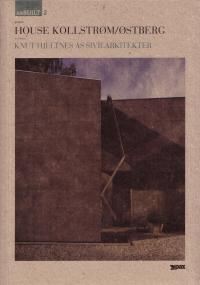House Kollstrøm/Østberg
Architect: Knut Hjeltnes AS Sivilarkitekter
asBUILT 2
What happens when a house is conceived under pressure? Knut Hjeltnes’ Smestad House provides a puzzling answer to this question. A certain kind of architecture has emerged out of this specific condition; an architecture of ambiguity.
Knut Hjeltnes identifies two categories of spaces: “the spaces we know much about” such as storage, bathrooms and laundry, and “the spaces we know little about” such as living rooms and bedrooms, which are referred to as “slow spaces.” The first category precedes the latter and forms the backbone of the house. Exactitude in the first category seems to allow for a greater flexibility in the second.
In his essay, architect Erik Fenstad Langdalen reflects that “…I suspect that the architect is pursuing ambiguity irrespective of this particular program; ambiguity seems to be a goal in its own right.” With a proclaimed affinity for the controlled beauty in traditional Japanese architecture, Knut Hjeltnes pursues a sense of complex completeness in his villas. In House Kollstrøm/Østberg materials seem to be distributed and configured with Calvinistic prudence to provide the appropriate stage for the lives and possible future experiences of the client.
Essay by Erik Fenstad Langdalen:
The book is edited by Børre Skodvin.


